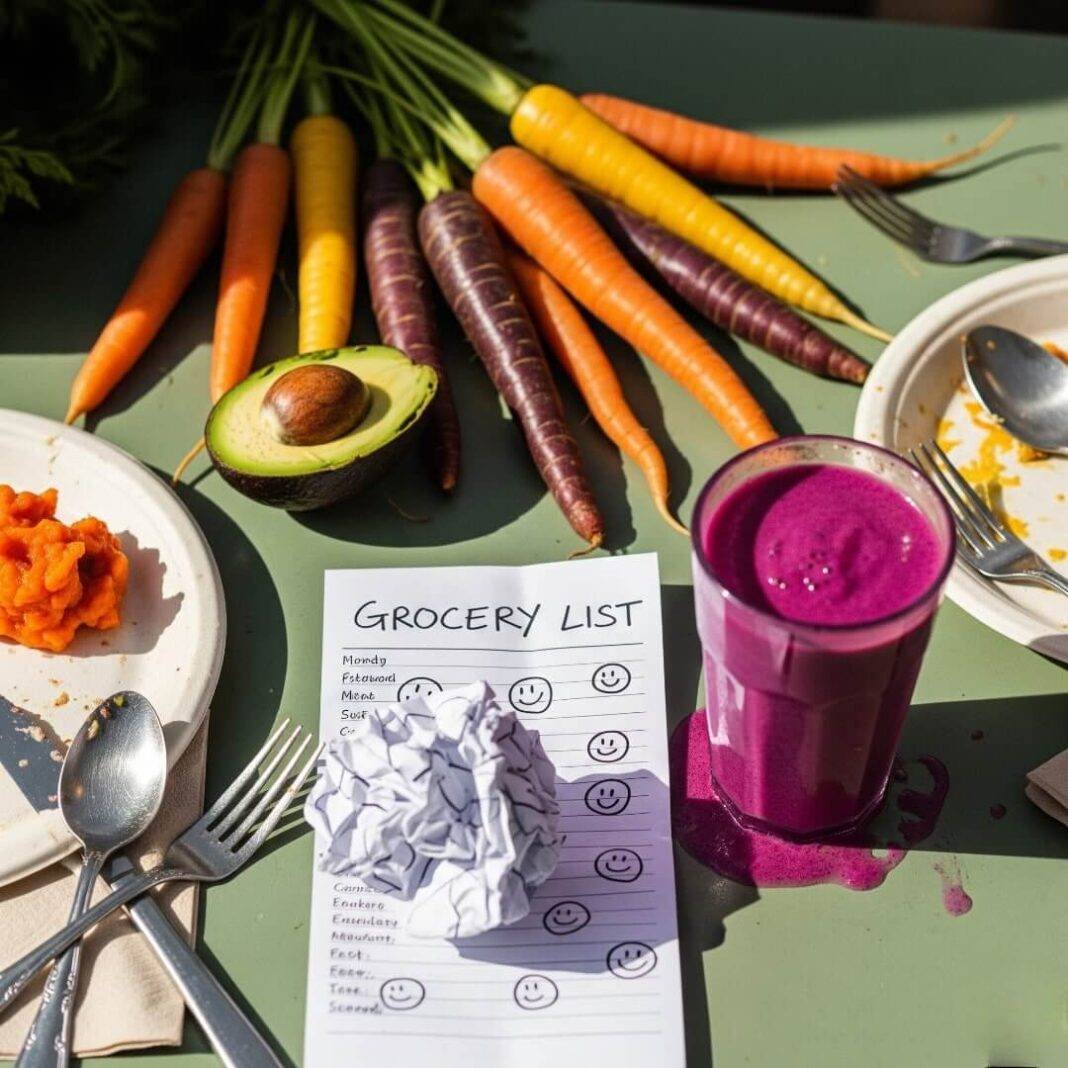Vegetarian nutrition plans have, like, totally taken over my life, and I’m not even mad about it. I’m writing this in my tiny Tacoma apartment, where the air smells like burnt garlic from my latest cooking disaster, and my cat’s glaring at me like I owe her an apology. I’m chugging this purple smoothie—beets, who knew?—and it’s staining my shirt, which is honestly peak me. I’m just a regular American gal, fumbling through plant-based diets, and let me tell ya, it’s been a wild, messy ride. I’ve got some vegetarian nutrition plans that actually work, but also some epic fails that make me laugh (or cry) now. Here’s my raw, slightly embarrassing scoop on how I’m trying to fuel my body right, straight from the PNW.
Why I’m Obsessed with Vegetarian Nutrition Plans (Kinda)
So, vegetarian nutrition plans weren’t exactly my plan A. Last year, I was at this sketchy diner in Olympia, scarfing down a burger, when my stomach was like, “Nah, we’re done here.” I felt like a deflated balloon, y’know? I stumbled across Forks Over Knives while doom-scrolling at 2 a.m., and their whole plant-based vibe hit me hard. I wasn’t trying to save the world or anything—just wanted to stop feeling like I’d been hit by a truck. Fast forward, I’m all in on veggie meal plans, even if I’ve set off the smoke alarm more times than I can count.
Real talk: it’s not all Instagram-worthy salads. I once tried to “taste the rainbow” with a veggie stir-fry and ended up with a plate of mush that looked like it belonged in a compost bin. But vegetarian nutrition plans have me feeling more awake, less bloated, and—dare I say it?—kinda proud of myself, even when I screw it up.
My Go-To Vegetarian Nutrition Plans (That I Haven’t Totally Ruined)
The “I’m Too Tired for This” Veggie Meal Plan
This one’s my lifeline when I’m running on fumes. It’s basically whatever I can throw together without crying—think canned beans, frozen veggies, and rice I probably overcooked. I got the idea from Budget Bytes, which is clutch for broke folks like me trying meat-free eating. My vegetarian nutrition plan here is just… simple. I’ll chop up some zucchini and sweet potatoes, roast ‘em, and mix with black beans. Last week, though, I dropped a whole tray of roasted veggies on my kitchen floor, and my cat thought it was a buffet. Lesson learned: don’t cook while arguing with your roommate over dishes.
- Why it’s dope: Quick, cheap, and you still get protein and fiber.
- My screw-up: Forgetting to rinse the beans. Ever taste straight-from-the-can saltiness? Blech.
- Hack: Keep a stash of pre-chopped veggies in the freezer for emergencies.

Mediterranean Veggie Diet (Or, When I Pretend I’m Classy)
This vegetarian nutrition plan is my favorite when I’m feeling bougie. The Mediterranean diet, but meat-free, is all about olive oil, veggies, and grains that make you feel like you’re on a Greek island. I found killer recipes on The Mediterranean Dish, and their chickpea salad is my jam. I made it for a potluck in Seattle last month, feeling all proud, until I realized I’d used way too much lemon juice and everyone was politely puckering. Still, this plan’s great for healthy vegetarian eating—lots of nutrients, not too preachy. I just wish I hadn’t tried to carry a gallon of olive oil home from Costco. Spilled it in my car, and now it smells like an Italian restaurant.
- Why it slaps: Tastes amazing and doesn’t feel like you’re starving.
- My fail: Thinking I could “eyeball” the olive oil. Spoiler: I drowned my salad.
- Pro tip: Fresh herbs are non-negotiable—parsley makes you look like you’ve got your life together.
The “Vegan-Ish” Plan for People Who Mess Up
I’m not vegan—mad respect to those who are—but I’ve been dipping my toes into vegan-ish vegetarian nutrition plans. It’s like, mostly plants, but I’m not gonna freak out if I eat some cheese. I found Oh She Glows and their lentil soup recipe, which I made while blasting Taylor Swift and feeling like a domestic goddess. Except I forgot to soak the lentils, so it took three hours and tasted like gravel. Still, this plan’s forgiving, which is perfect for someone like me who’s still figuring out meat-free nutrition. I tried their vegan muffins once and accidentally used salt instead of sugar. My friends still bring it up.
- Why it’s chill: You can ease into plant-based diets without going full monk.
- My oops: Thinking vegan cheese melts like real cheese. It doesn’t. It just… sits there.
- Try this: Start with vegan breakfasts—smoothies are hard to screw up.

Mistakes I Made So You Don’t Gotta
Vegetarian nutrition plans sound easy until you’re staring at a fridge full of wilting spinach and no plan. Here’s my hall of shame:
- No meal prep: I used to just wing it at the store, then come home and eat crackers for dinner. Yummly has meal plans that keep me sane.
- Forgetting nutrients: I was basically living on bread for a month. Had to learn about B12—check Healthline for the basics.
- Going too hard: Tried making my own tempeh from scratch. It smelled like feet and I gave up. Stick to store-bought at first, y’all.

































